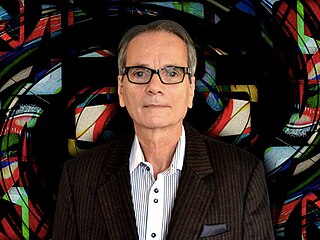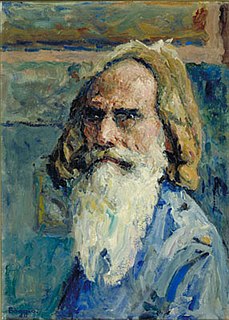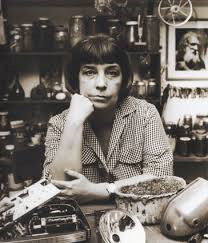 W
WMario Abreu was a Venezuelan artist known as the "master of magic objects".
 W
WLewis Brian Adams was an English painter who spent most of his career in Venezuela. He studied at the Royal Academy of Arts in London and exhibited there for a number of years. Why he went to Caracas is unknown, but it seems likely that it was to paint in a market where he would find less competition. He introduced a number of trends from English portraiture to the world of Venezuelan art.
 W
WJulio César Aguilera Peña is a Venezuelan-American painter and sculptor born in Caracas, on July 28, 1961. Previously to his career as an artist, Aguilera was awarded the sixth Dan in Kung Fu when he was just 26 years old.
 W
WBalthazar Armas is considered one of the pioneers in the contemporary figurative art movement in Latin America, where the industrial and urban influence of his paintings makes them approachable and distinguishable. His most recent work has a postmodern influence that reflects in the presence of social narrative, indigenism and social criticism in his paintings. His most recent series, "Andé andé" (2003), "Botanica" (2007), and "Sobre el Vuelo" (2007), transmit the energy and mysticism of the people and environment of the cultures of Latin America.
 W
WBartolomé Sanchez, better known as Bartus Bartolomes, is an artist born in the andean town of Pregonero, the state of Táchira in Venezuela. He is currently based in Italy and France. Bartus creates using a wide range of mediums, including painting, drawing, caricature, photography, design and even poetry. In 1969 he wrote "Kitsch Art", a manifesto promoting street artistic experimentalism.
 W
WEmilio Boggio was an Italian-Venezuelan pioneering impressionist painter. In 1864 he traveled to France and studied at the Lycée Michelet in Paris until 1870. In 1873, he returned to Caracas and dedicated himself to the family business. In 1877, he returned to France to join the Académie Julian where he received lessons from Jean-Paul Laurens. In 1888, obtained a Hors Concours at the Salon of the Société des Artistes Français and in 1889, was awarded a bronze medal at the Exposition Universelle in Paris.
 W
WJacobo Borges is a contemporary, neo-figurative Latin- American artist. His curiosity for exploring different mediums made him a painter, drawer, film director, stage designer and plastic artist. Known for his ever-evolving style, there is one constant principle that unites his work: "the search for the creation of space somewhere between dreams and reality where everything has happened, happens, and may happen." His theoretical approach and unique, innovative technique has won him acclaim all over the world. He has had solo exhibitions in France, Germany, Austria, Mexico, Colombia, Brazil, Britain and the United States. Today, he is considered one of the most accomplished artist of Latin America. His oeuvre includes a rich body of paintings, a film directed in 1969, and a book The Great Mountain and Its Era, published in 1979. In 1982, a biography by Dore Ashton, called Jacobo Borges, was published in English and Spanish. Jacobo Borges resides in New York City and Caracas, Venezuela. He has a wife, Diana and three children, a daughter named Ximena and two sons, one named Ezequiel and other Emiliano.
 W
WJuan Calzadilla is a Venezuelan poet, painter, and art critic.
 W
WAntonio José Carranza Goicochea was a Venezuelan painter.
 W
WCarlos Cruz-Diez was a Venezuelan artist said by some scholars to have been "one of the greatest artistic innovators of the 20th century."
 W
WPaul del Río Canales was a Venezuelan sculptor, painter and revolutionary. Paul del Rio combined modernism, cubism and surrealism to create enigmatic paintings that are usually a social commentary on the harshness of modern urban life for ordinary people, and their longing for a different life. Originally from Spain, his parents were exiled to France after the fall of the republic and then immigrated to Havana, Cuba where he was born. His family moved once more to Caracas, the capital of Venezuela his second year.
 W
WCarmelo Fernández Páez was a Venezuelan engineer, soldier, cartoonist, lithographer and watercolorist. He was born in the town of Guama, Yaracuy State, on June 30, 1809 and died in Caracas on February 9, 1887.
 W
WElsa Gramcko was a Venezuelan artist, known as an abstract sculptor and painter. Her earlier works, which date from 1954, were geometric paintings, while her later works were more tachist in nature. While her earlier works consisted of mostly paintings, she expanded into sculpture and assemblage in the 1960s and 1970s.
 W
WWilmer Herrison is a Venezuelan artist currently based in Paris. He is the creator of a modern art influenced by both European and South American traditions.
 W
WJuan Lovera was a Venezuelan painter, best known for his portraits and historical scenes relating to his country's independence movement.
 W
WCelestino Martínez Sánchez was a Venezuelan painter, lithographer, illustrator and photographer. He also spent part of his career working in Colombia.
 W
WJuan Vicente Gómez Landaeta, better known as Pájaro, is a Venezuelan painter whose work has reached from figurative painting to expressionism and surrealism.
 W
WOswaldo Vigas was a Venezuelan artist, best known as a painter and muralist. His work includes painting, sculpture, prints, drawings, ceramics and tapestries. His artwork was created between France and Venezuela, and it's an original synthesis of the cultural roots of Latin America and the latest artistic currents of modernity. He has had over one hundred solo exhibitions and is represented in numerous public institutions and private collections around the world. He is predominantly recognized as a self-taught artist and painter.
 W
WRodolfo Villaplana is a Venezuelan painter who lives and works in France.
 W
WCarlos J. Tirado Yepes, is a Venezuelan artist, painter and sculptor who has developed a very personal and precise work line linked to Neo-pop art. With plenty of personal art exhibitions, Tirado Yepes has participated in numerous collective exhibitions, receiving different awards like III Premio de Escultura del Certamen Aires de Córdoba in 2004 and other recognitions, among them, in the Venezuelan Embassy in DC (2005), and the X Latin Art Festival of Atlanta (2005).
 W
WPedro León Zapata was a prominent Venezuelan artist, humorist and cartoonist.
 W
WCarlos Zerpa, was a 20th-century Latin American painter. He moved to live in Milan in 1973 to study printmaking and photography at the Scuola Cova, and design with Bruno Munari at the Instituto Politécnico. Zerpa was a self-taught painter, by 1974 he was creating installations and performance pieces. He returned to Venezuela in 1980, but spent two years in New York:. By 1984 he ceased performing and concentrated on making objects. His work is in many ways autobiographical. It recalls department store displays cases which serve as stages for his homages to the past. Zerpa also trained in design, photography and printmaking, paintings, drawings, sculptures, performances and installations, He exhibited internationally and won many awards. Carlos Zerpa trained in Italy, Germany, and United States; he blended kitsch with references to Giotto, van Gogh, Picasso, and Duchamp. His focus was towards historical themes in terms of spatial and temporal shifts was addressed to several Venezuelan artist one of them being Carlos Zerpa. The preoccupation with time seems especially relevant in a country whose historical development does not go back much before the eighteenth century. Carlos Zerpa and Miguel von Dangel chose as their referent the period of the discovery of the new world and just prior, through a mythology of its human and animal inhabitants primarily located in the Caribbean and the area now occupied by Venezuela. Zerpa after Christopher Columbus encountering “new tribes, strange animals and lush forests” Carlos capitalized these myths as well as on his grasp of Western art history, from which he appropriated liberally.